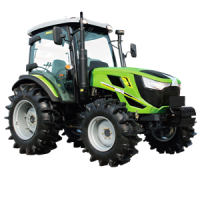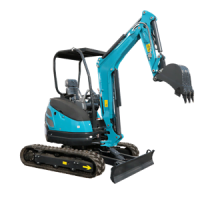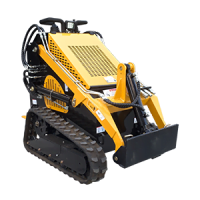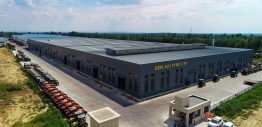Tractors are an incredibly powerful tool for modern farmers. But to get the most out of them, you need to tractor data. In this article, we’ll look at what exactly that data is and how it can help inform your decisions about the best way to use tractors on your farm. So if you’re looking for ways to make more money or be more efficient with your tractor, read on!
Introduction à Tracteur Data
Tractors are an essential piece of equipment on any farm. They are used to pull implements, such as plows, harrows, and seeders, and can also be used to power other farm machinery. In addition to their many uses, tractors also generate a lot of data. This data can be used to improve your farming operation and make better decisions about your tractor fleet.
To understand the data behind tractors, it is first important to understand how they are tracked. Tractors are equipped with GPS devices that allow them to be tracked by satellite. This tracking data is then transmitted to a central server where it can be accessed by farmers and other authorized users. The GPS data provides information on the location of the tractor, as well as its speed and direction of travel.
This information can be used in a number of ways. For example, you can use it to track the progress of your field work and make sure that your tractor is being used efficiently. You can also use it to monitor the health of your tractor fleet. By tracking hours of use and maintenance records, you can identify potential problems before they cause downtime on your farm.
The data generated by tractors can also be used to improve your bottom line. By understanding how your tractors are being used, you can make changes to optimize their utilization.

What Types of Data Do Tracteurs Collect?
Tractors are equipped with sensors that collect data about the environment and the conditions of the field. The type of data collected by tractor sensors can be used to improve farming practices and make better decisions about when and how to plant, cultivate, and harvest crops.
Some of the data that tractors collect include:
-Soil temperature
-Soil moisture content
-Wind speed and direction
-Air temperature and humidity
-Precipitation
Benefits of Analyzing Tractor Data
When it comes to farming, data is everything. The right data can help you make informed decisions about seed selection, irrigation, and even tractor maintenance. By analyzing tractor data, you can improve your overall operation and make your farm more efficient and productive.
There are a number of benefits that come with analyzing tractor data. For one, it can help you save money on repairs and maintenance. By understanding how your tractor is being used, you can identify potential problem areas and take steps to prevent them from becoming an issue. Additionally, analyzing tractor data can help you optimize your farming operation for maximum efficiency. You can use the data to track things like fuel usage, soil conditions, and yield information in order to make necessary adjustments to your farming practices.
In short, analyzing tractor data can be a valuable tool for any farmer looking to improve their operation. It can help you save money, increase efficiency, and make better decisions about all aspects of your farm.
How Can You Access and Use Tractor Data?
There is a lot of data that goes into making a tracteur. This data can be used to help you make better decisions when it comes to buying or using a tractor. Here are some ways that you can access and use tractor data:
The United States Department of Agriculture (USDA) publishes a lot of data about tractors. You can find this data on their website or in their publications. The USDA also has a Farm Machinery Cost Calculator that you can use to compare the cost of different types of tractors.
The Environmental Protection Agency (EPA) also has some data on tractors. This data is mainly about emissions from tractors. You can find this data on their website or in their publications.
There are also many private companies that sell data about tractors. You can usually find this type of data online or in magazines devoted to agriculture.
Examples of How Tractor Data Has Been Used
There are many ways that tractor data can be used to improve efficiency and effectiveness on the farm. Here are a few examples:
- Tractor data can be used to plan crop rotations. By understanding which crops do well in certain conditions, farmers can plan their rotations around expected weather patterns and soil type. This helps ensure that crops get the nutrients they need and reduces the chance of disease.
- Tractor data can be used to map out irrigation systems. By understanding how much water each crop needs, farmers can design irrigation systems that deliver the right amount of water to each field. This helps reduce wastage and ensures that crops have enough water to thrive.
- Tractor data can be used to choose the best time to plant or harvest. By understanding when crops are most productive, farmers can plan their planting and harvesting schedule around these times. This helps ensure that crops are harvested at their peak ripeness, providing the best possible yield.
- Tractor data can be used to monitor soil health. By tracking changes in soil moisture levels, pH levels, and nutrient content, farmers can identify trends and make adjustments to their management practices accordingly. This helps keep soils healthy and productive over the long term.
Common Challenges Faced with Using Tractor Data
There are a few common challenges faced when using tractor data. The first challenge is collecting the data. There are many different types and sources of data, so it can be difficult to know where to start and what data is most important. Another challenge is making sense of the data. Tracteur data can be complex and difficult to interpret. It is often helpful to work with a professional who understands tractor data and can help you make sense of it. The last challenge is using the data to make decisions. Tractor data can provide a lot of information, but it is up to you to use that information to make decisions about your tractor fleet.
Conclusion
As you can see, understanding the data behind tractors is essential if you want to make informed decisions about your purchase. We hope that this article has provided you with a better understanding of how to interpret the data and use it to your advantage when making purchasing decisions. With the right knowledge and analysis of tractor data, you can be sure that whatever tractor you choose will meet all your needs and provide years of reliable service.





-1.png)